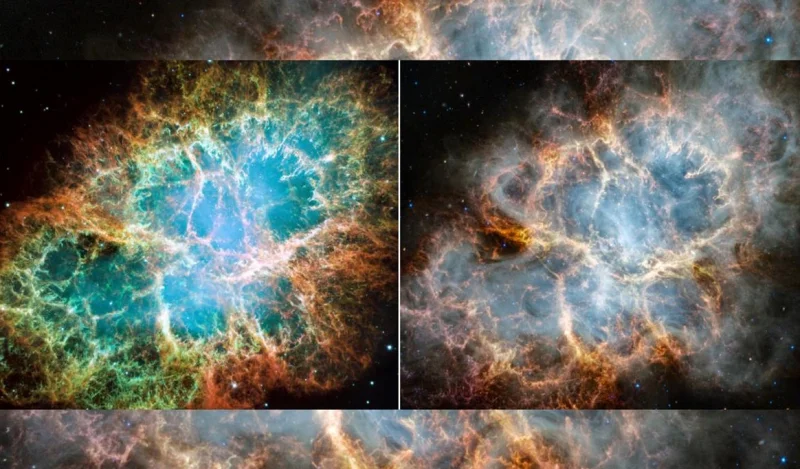James Webb peered into the depths of the Crab Nebula
- November 1, 2023
- 0
NASA’s James Webb Space Telescope took a series of images of the Crab Nebula in the optical and infrared ranges. The Crab Nebula, the remnant of a supernova
NASA’s James Webb Space Telescope took a series of images of the Crab Nebula in the optical and infrared ranges. The Crab Nebula, the remnant of a supernova

NASA’s James Webb Space Telescope took a series of images of the Crab Nebula in the optical and infrared ranges. The Crab Nebula, the remnant of a supernova explosion, is located 6,500 light-years from Earth. This cosmic education has attracted the attention of astronomers worldwide for many years.
NASA reported that the wind generated by the pulsars at the heart of the nebula continues to push the cloud of gas and dust outward at tremendous speed.
“James Webb’s sensitivity and spatial resolution allow us to determine the composition of the ejected material, particularly its iron and nickel content, which could reveal what type of explosion the Crab Nebula caused,” said Tea Temim, head of the research team..
It was possible to photograph the radiation of cosmic dust for the first time in photographs taken with the James Webb space telescope. The central part of the image, represented by yellow-white and green dotted threads, represents areas where these dust particles are found.
Another feature of the Crab Nebula that could be examined with the help of new images was its inner workings. The photographs taken by James Webb gave a clearer and more detailed image than the images previously taken by the Hubble Space Telescope. Specifically, NASA reports that James Webb was able to capture so-called synchrotron radiation produced by charged particles such as electrons moving at relativistic speeds around magnetic field lines. In the picture, the radiation can be seen as a milky-smoky material.
Astronomers and scientists will continue to study the Crab Nebula with the James Webb Telescope and other instruments. In particular, Hubble will be used for the first time in more than 20 years to study the emission lines of this nebula. Source
Source: Port Altele
As an experienced journalist and author, Mary has been reporting on the latest news and trends for over 5 years. With a passion for uncovering the stories behind the headlines, Mary has earned a reputation as a trusted voice in the world of journalism. Her writing style is insightful, engaging and thought-provoking, as she takes a deep dive into the most pressing issues of our time.